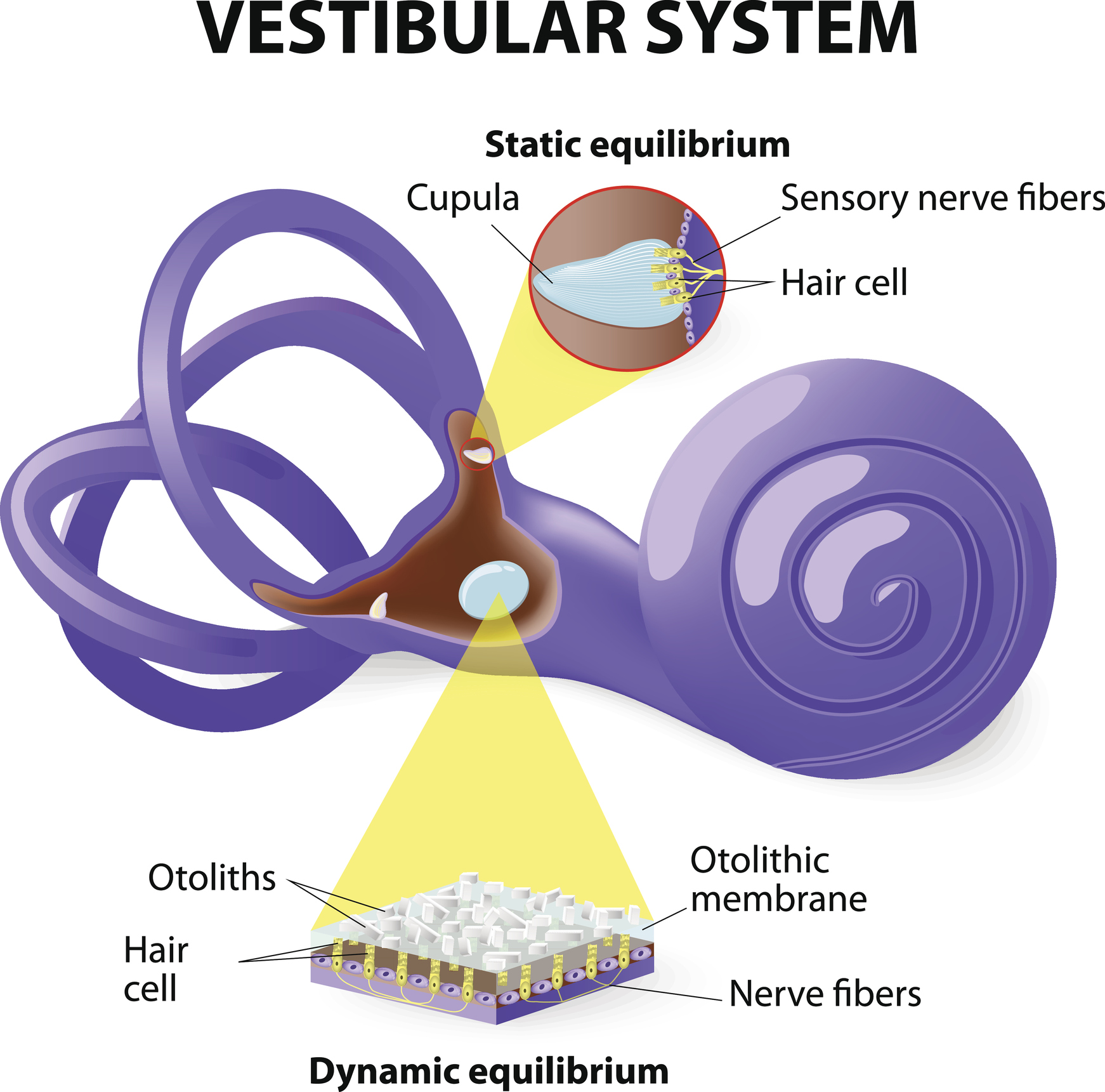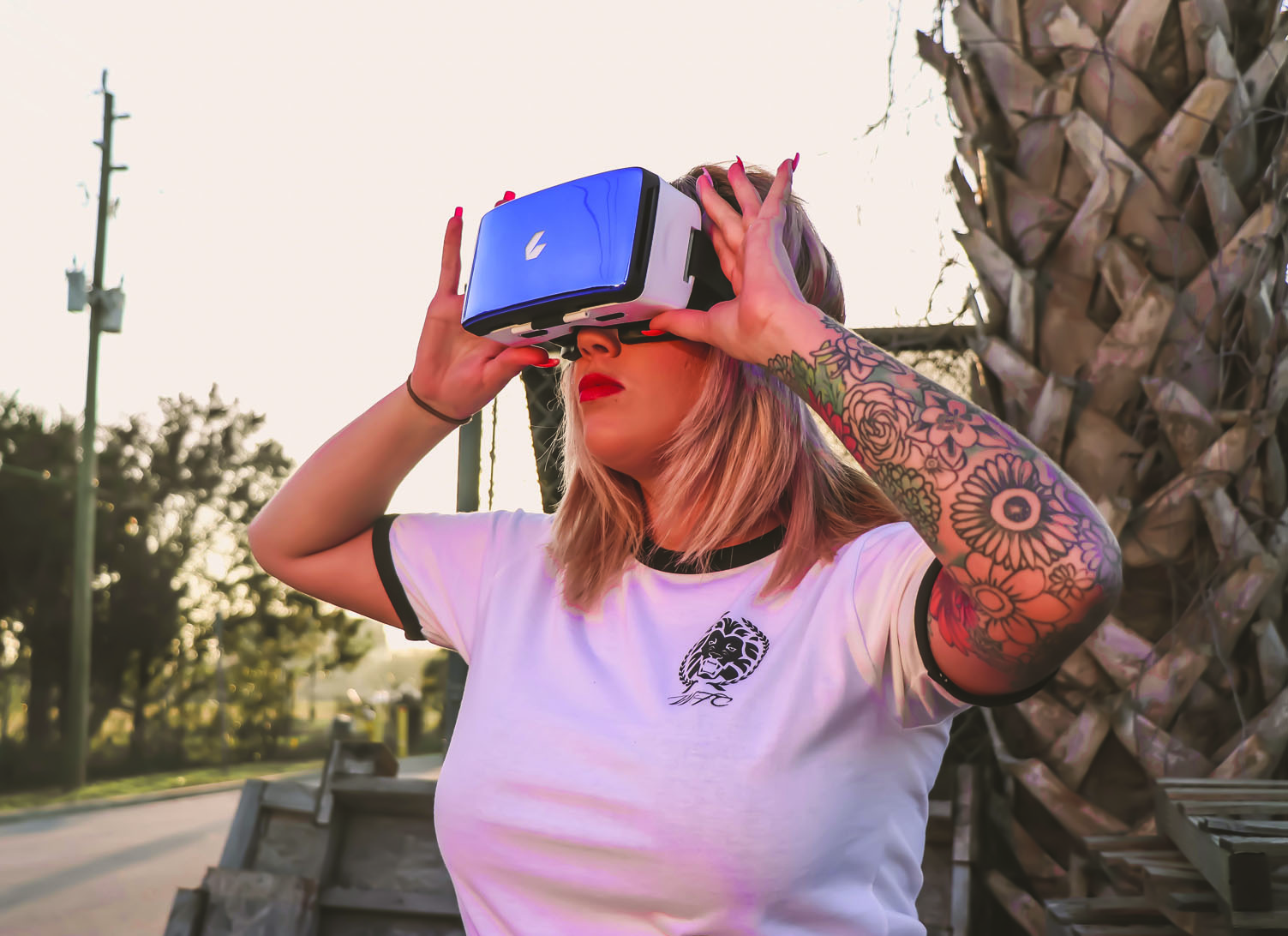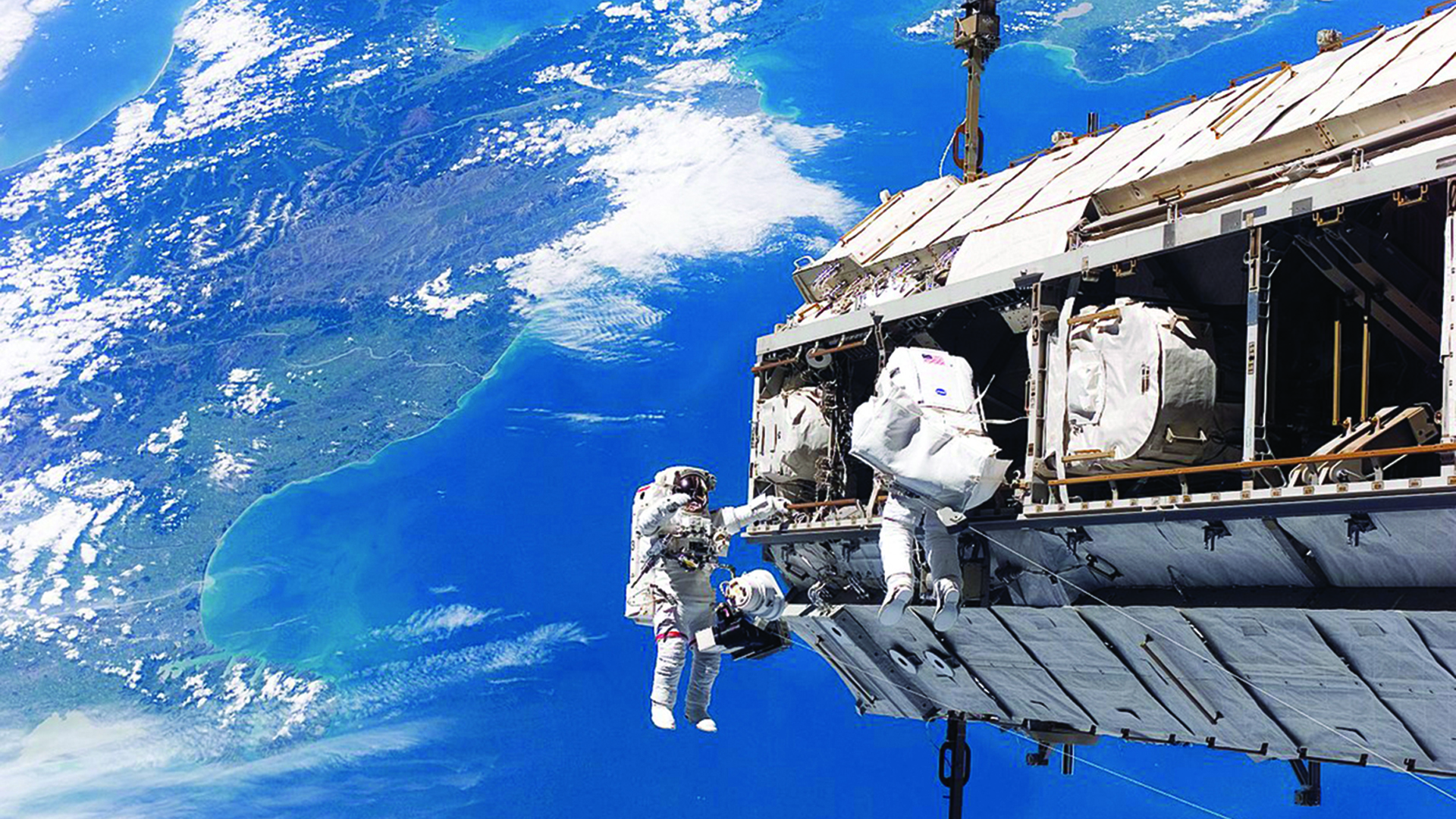When we imagine a future filled with space travel, virtual reality and intercity hyperloops, we ignore the limits of the human vestibular system
What medical issue do NASA, the ballet, camel riders, and roller-coaster engineers have in common?
You guessed it: motion sickness.
For as long as humans have sought to fling themselves into space at wild speeds and at odd angles, we’ve been cursed by the demons of dizziness and flying vomit.
Fourth century Chinese medical literature refers to cart-related motion sickness as 苦 ⻋, which literally translate to ‘bitterness-cart’.
Napoléon Bonaparte’s soldiers complained of camel sickness in the Egyptian campaign of 1798. The gag-provoking sway of these “ships of the desert” proved too much for some military men, who had to excuse themselves from battle.
Plagued by boat-induced queasiness, Charles Darwin wrote to his father from The Beagle in 1832, “If it was not for sea-sickness, the whole world would be sailors”.
Some astronauts struggle to find their space legs in microgravity. NASA has spent decades working on a range of treatments to keep symptoms at bay, including, most recently, a fast-acting nasal spray containing the anti-motion sickness medication scopolamine.
But for Chris Hadfield, no amount of weightless aerobatics aboard the International Space Station has ever quite compared with a fairground ride he took as a teenager.
“You know one of those rides that spins you for a long time in one direction and then, when you tip your head suddenly, it completely tumbles your internal gyros? I think that’s the most motion sick I’ve ever been, where it affects you for hours afterwards.”
Hadfield (Colonel Astronaut, retired) is the former commander of the International Space Station who charmed a global YouTube audience with his in-orbit cover-version of David Bowie’s song Space Oddity. As a three-time traveller into outer space, and a test pilot for more than 70 different aircraft before that, Hadfield’s career has been a series of stomach-churning adventures.
“Through almost everything I’ve ever done in my profession, motion sickness has been an integral part,” Hadfield tells The Medical Republic. “You just learn to deal with it.”
While doing loop-the-loops in a CF-18s fighter jet is enough to trigger motion sickness in just about anyone with a working vestibular system, the sensory experience of spaceflight is even more bizarre.
“Suddenly, for the first time in your life, you are weightless and so there is an enormous disconnect between what your eyes are telling you and what your vestibular and proprioceptive system is telling you,” says Hadfield.
When you’re putting a girdle round the Earth 16 times a day in a tin can, there’s no such thing as “up”. The human body responds to this outlandishness by vomiting and then going to sleep, “neither of which you can afford to do right after the engine is shut off and you are weightless”, says Hadfield.
Astronauts take phenergan and scopolamine to prevent motion sickness, and dexadrine to deal with the drowsiness caused by the medication. “Apart from making you a little bit hyper … the [side effects] are pretty small,” says Hadfield.
Space-shuttle pilots, however, avoid motion sickness medication because completing an emergency landing under the influence of drugs is, according to Hadfield, a pretty bad idea.
Astronauts normally don’t go outside the space station during the first three days of a mission because that’s how long it takes for the vomit reflex to fade, says Hadfield.
If an astronaut throws up during a spacewalk, their helmet becomes a “fishbowl” filled with stomach acid, he says. The vomit doesn’t go to the bottom, but floats around, getting into the astronaut’s eyes, nose and mouth and disrupting the space suit’s functioning.
“It would be like putting a balloon on your head and then throwing up and staying in it for eight hours,” says Hadfield. “It is definitely something you don’t want to do.”
Susceptibility to space sickness varies from astronaut to astronaut. Some people never get over it.
Jake Garn, an American member of Congress who flew aboard the space shuttle Discovery as a payload specialist in the 1980s, had such persistent motion sickness symptoms that his name became something of a joke metric, where “one Garn” represented the highest level of suffering.
It is possible to immunise jet pilots against motion sickness using simulators, spinning chairs and visual miscues. But there is no way to recreate the feeling of sustained weightlessness on Earth.
“[Some] people who are tough as nails, fighter pilots on Earth, get sick in space badly, and some don’t,” says Hadfield.

WHAT’S GOING ON?
A functioning vestibular system is a prerequisite to getting motion sickness. Only people with damaged inner ears seem to be completely immune.
Go a couple of centimetres or so into the human ear, turn toward the occiput and you’ll discover our organ of balance. The structure has three semi-circular canals, which are sensitive to rotation, and otoliths, which are sensitive to gravity and linear acceleration.
Shake your head side-to-side and hairs in the inner ear labyrinth will sense the movement of fluid along the horizontal plane, with the fluid flowing in opposite directions in each ear.
Ride a carousel or take an elevator, and tiny pebbles of calcium carbonate will tumble in response to the increased acceleration, tickling hair cells horizontally in the utricles and vertically in the saccule.
The aetiology of motion sickness is mysterious, but the “sensory-motor conflict theory” is one commonly accepted explanation today, says Dr Charles Oman (PhD), the MIT astronautics expert who came up with the theory.
Dr Oman postulated that neurons in the brain stem or cerebellum were making calculations about what the expected motion should be based on past experience.
If the information coming from the inner ear, eyes and proprioceptors kept contradicting our internal prediction, the brain would report that something terrible was happening and respond by making you sick.
Over time, this sensory conflict triggers learning, and the brain modifies your posture so that the body can remain stable in a new environment, such as a rocking fishing boat, and motion sickness subsides. Sailors call this finding their sea legs.
The brain then has to unlearn all this when sailors go ashore. “Mal de debarquement”, the feeling that the dock is moving, is familiar to all experienced sailors. The rewiring of the brain takes only a few hours or days for most people. But for a rare few, the symptoms can persist for years and become debilitating.
When Dr Oman proposed his theory of motion sickness in 1982, sensory conflict neurons had not yet been found. Their existence was debated for three decades before a major breakthrough in 2014.
“Sensory conflict neurons that have many of the qualities that we had predicted were, in fact, found in the brainstem at the base of the cerebellum,” says Dr Oman.
Professor Kathleen Cullen, a scientist at McGill University in Canada, co-authored a paper with Dr Oman describing how sensory conflict neurons found in the brainstem of rhesus macaques could explain the genesis of motion sickness.
“That said, there is still a lot we don’t know,” says Dr Oman. The coupling of the sensory conflict neurons with the vomiting centre of the brain is not well understood.
“We don’t have a good explanation for why there is a delay in the development of severe nausea,” he says. “There is something very unusual and non-linear about the coupling.”

SURVIVAL OF THE SICKEST
Why does the body have a forceful, but delayed, gut reaction to bewildering sensory signals?
The theory that has gained the most traction in popular culture is that proposed by Oxford University psychologist Dr Michel Treisman.
In an article published in the journal Science in 1977, Dr Treisman suggested that motion sickness might be an evolutionary response to food poisoning. The brain interprets the mixed sensory signals as a hallucination caused by neurotoxins and promptly makes us empty our stomachs.
Motion sickness occurs in a wide range of species, including horses, monkeys, sheep and some species of birds.
“Naturally occurring toxins which affect the nervous system are likely to alter the sensory inputs or motor coordination, or both,” Dr Treisman wrote. “An emetic response … would be an advantageous adaptation for a specialised feeder which might ingest neurotoxin in vegetation or carrion.”
Even fish experience motion sickness. In 2009, German zoologist Dr Reinhold Hilbig placed an aquarium containing around 50 fish on an airplane. When the airplane took a nose dive, the fish started to lose their orientation, turn in circles, and looked as if they were about to vomit.
Dr Treisman’s poison theory of motion sickness is plausible, but the evidence is “at best equivocal”, says Dr Oman.
The medical literature suggests that food poisoning rarely causes vestibular symptoms in humans and animals. Drugs that are effective for nausea and vomiting due to cytotoxins don’t protect against motion sickness. And the vestibular system doesn’t seem to be involved in triggering the body’s response to food poisoning, which is controlled mainly by serotonergic receptors in the gut and central nervous system.

INDIVIDUAL DIFFERENCES
About one in every three people falls victim to motion sickness, with about 5% of individuals being particularly badly hit.
As someone who has experienced motion sickness when looking down the barrel of a microscope, watching someone else play video games, and even when researching motion sickness for this story, I definitely fit into the highly susceptible category.
Women seem to experience motion sickness worse than men in a ratio of about five to three, and symptoms vary predictably during the menstrual cycle.
These individual differences can be explained, in part, by genetic factors. Motion sickness is highly heritable and it is estimated that around 70% of an individual’s risk is due to genetics. People of Asian descent are more susceptible to motion sickness than people with European ancestry.
A recent study of the genome of more than 80,000 people by 23andMe found 35 instances where changes to a single letter in the DNA sequence were related to motion sickness.
The genomic data confirmed that motion sickness was tied to migraines, vertigo, morning sickness, and post-operative nausea and vomiting. The study made new links between motion sickness and altitude sickness, mediated through hypoxia.
Certain phenotypes, such as being a good sleeper, handling stress well, not experiencing headaches after drinking wine, and having a good sense of direction were associated with a reduced risk of motion sickness.
Thomas Stoffregen, a professor of kinesiology at The University of Minnesota, has discovered a remarkably reliable way of predicting who will succumb to motion sickness.
His 2016 study found that around 60% of people reported feeling motion sick after using an Oculus Rift virtual reality headset for 15 minutes. The rate of motion sickness was about twice as high in women than in men.
Curiously, motion sickness was related to how much a person swayed back and forth and side to side prior to gameplay.
Men and women had different natural postural sway, probably due to factors such as height, weight, foot size and centre of mass, and thus had different susceptibilities to motion sickness.
Professor Stoffregen’s “postural instability theory” does something that the sensory conflict theory can’t do: it predicts a sex difference a priori rather than relying on ad hoc explanations.
If his theory is right (and motion sickness is worse in people with a greater natural body sway), you would expect symptoms to disappear when a person’s movement was completely restricted.
“We did that,” Professor Stoffregen says. His laboratory ran an experiment where volunteers were tied to a tilt table. It yielded disappointing results; people still got sick even when they were fixed in position.
“I was all bummed out and I thought I was a failure,” he says. But under closer scrutiny, people were squirming under the bungie cords in a way that predicted who was going to get sick, leaving the postural instability theory intact.

ADAPTATION
Motion sickness could be the undoing of the virtual reality industry, warns Professor Stoffregen. If more than half of your potential market feel nauseous using your product, you have a bit of a problem.
While sea or space travellers are trapped in an uncomfortable situation for extended periods of time and forced to acclimatise, people are unlikely to wear a virtual reality headset long enough to adapt to the new environment if it is making them feel sick.
“It is both ironic and frustrating that ‘better’ technology has been associated with more motion sickness,” says Professor Stoffregen.
Pacman never made anyone sick, but new immersive VR motivates people to act as if they were in another world, destabilising their body relative to the Newtonian world in which they live, he says.
It may be possible for VR headsets to detect when a person is becoming unstable, and thus prone to motion sickness, and either stop the game or adjust the dynamics to re-stabilise the player in the real world (a kind of “noise cancelling” solution), says Professor Stoffregen.
But VR companies are more interested in the impressive visuals, and tend to focus more on frame rate, resolution and graphics cards than on addressing motion sickness, and they are paying the price. Do you know anyone who owns an Oculus Rift? Professor Stoffregen asks.
The human imagination often gallops ahead of our physiological limitations. Elon Musk’s hyperloop aims to transport people at a maximum speed of 1,300 km/hour inside a giant vacuum tube.
But once you adjust for lateral and vertical accelerations, the proposed 30-minute trip between San Francisco and Los Angeles becomes a “vomit comet”, astrophysicist Ethan Siegel writes in Forbes magazine. Humans simply can’t tolerate more than about 0.2g’s of acceleration “in the up-and-down or side-to-side directions”, he says.
The human race only started shooting around corners in carts and taking on the high seas around 3000 to 5000 years ago. Our inexorable desire to travel faster and go further breaks with our evolution as bipedal primates, but there’s some hope that we will adapt.
Professional ballet dancers can pirouette perpetually without puking. Structural differences in the cerebellum of ballet dancers appear to make them immune to dizziness, according to a UK study published in the journal, Cerebral Cortex, in 2015.
Astronauts have to readjust to the heavy consequences of living with gravity when they return to Earth.
“After you land … your inner ear is in … violent disagreement with the visuals that you are getting,” says Hadfield.
On his third flight, which lasted the better part of half a year, it took him a day or two to stop feeling nauseous. But he’s not complaining.
“You get to fly in space. A little bit of nausea, who cares?”


